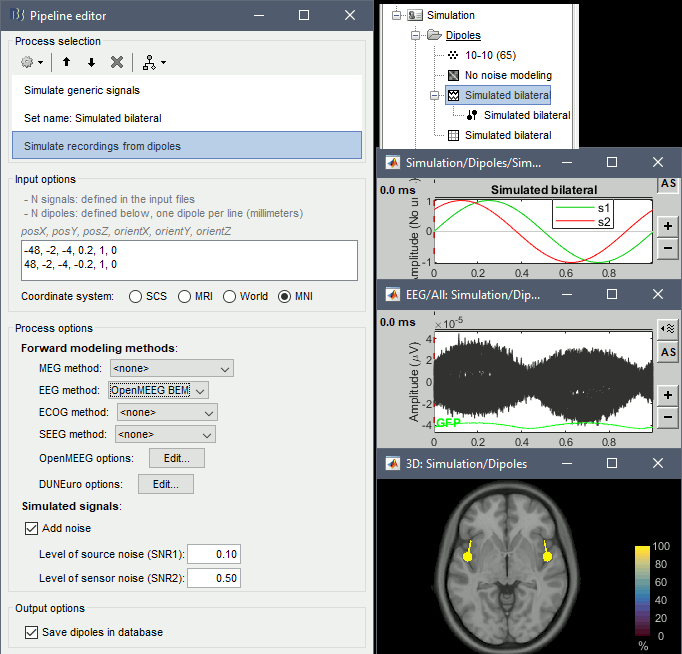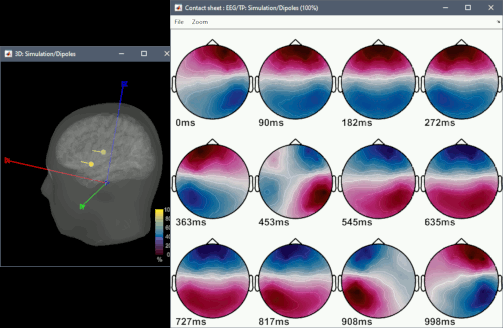Dear all, I was wondering to achieve the most precise dipole simulation of a scout, in simulate recordings in the scout tab, is it advisable to feed the script with a noise profile (such as the baseline of an epoched data) or with the whole time-span of condition averaged epoch or better performing the simulation at the whole time-span in a single subject (or single trial) level and then averaging out (given that the exact same head model and source reconstruction is applied to all the subjects).
Really appreciate any help here,
Regards,
Milad
If you want a "precise" simulation, then do not use any noise.
If you want a realistic simulation, then add some noise. The covariance pattern of the noise that is added to the sensor data will be the one you provide in input.
I'm sorry, I'm not sure I understood your question here...
Could you please explain more clearly what you are trying to achieve?
Thanks a lot Francois, infact I want to model the dipoles of a pre-selected set of scouts (based on a fMRI control group) and take the dipole patterns as principal components to model the ERP response across conditions (in an EEG dataset). Therefore I wanted the dipole simulation of the selected scouts to be least impacted by the choice of the inputting epoched time-series. Any recommendation here?
Thanks in advance,
Milad
What do you mean with "model the dipoles of a pre-selected set of scouts"?
If you are using simulations to generate MEG or EEG recordings, you already know your dipole activity, and you simply want to multiply it with the forward model to obtain the corresponding explained recordings.
in simulate recordings in the scout tab, is it advisable to feed the script with a noise profile
Using this menu, there is no noise added to the simulated EEG/MEG data. You already start from an existing source file.
In the process "Simulate > Simulate recordings from scouts", you can attach a signal to a scout, generate a source file and compute the corresponding modelled MEG or EEG recordings. Only in this process you can add noise to the sources, and then noise to the recordings (which is generated using the the noise covariance matrix)
See for instance this thread: Simulate scalp recording - #3 by Wisal_Siyam
Thanks a lot Francois, as you mentioned earlier and in other threads the better way to produce a dipole topology is using 'Simulate Generic Signals' process. This produces a cleaner and more stable dipole configuration from a scout compared to simulating a scout from an epoched time-series. Now just checking the modulation of the dipole topology under varying noise profiles.
Thanks again,
Do you still need help with anything?
FYI: To address all the recent questions we had related with simulations, I added some code in Brainstorm and wrote a new tutorial:
https://neuroimage.usc.edu/brainstorm/Tutorials/Simulations

